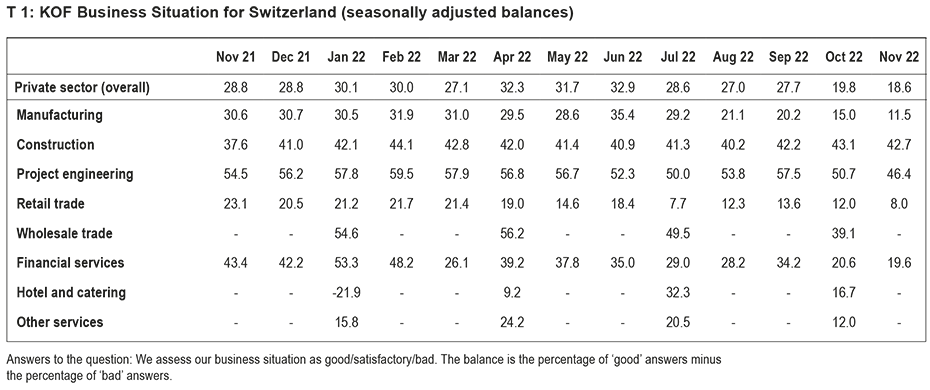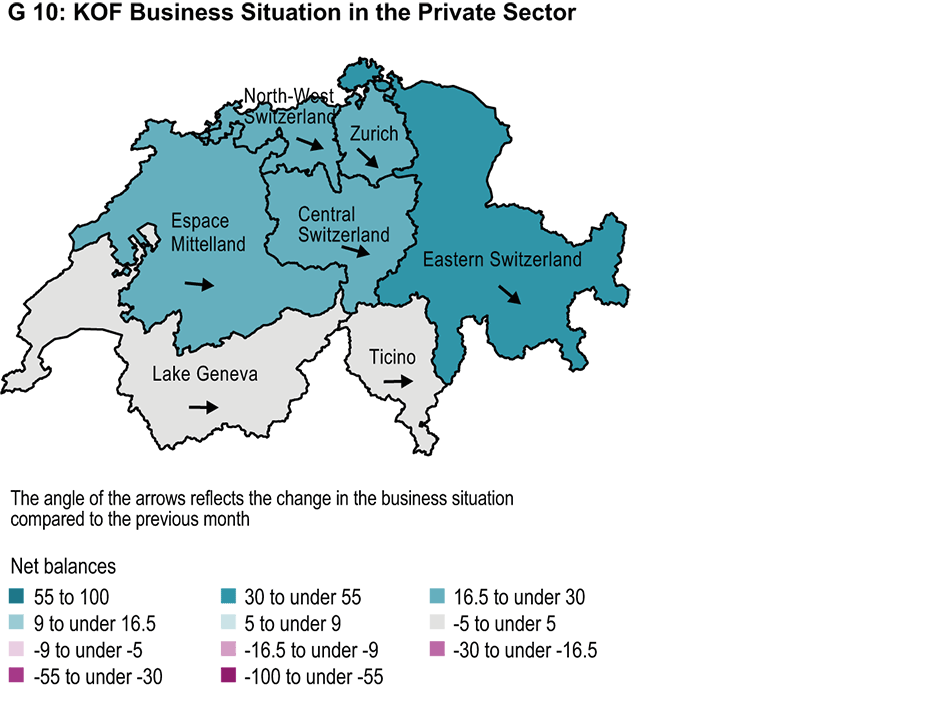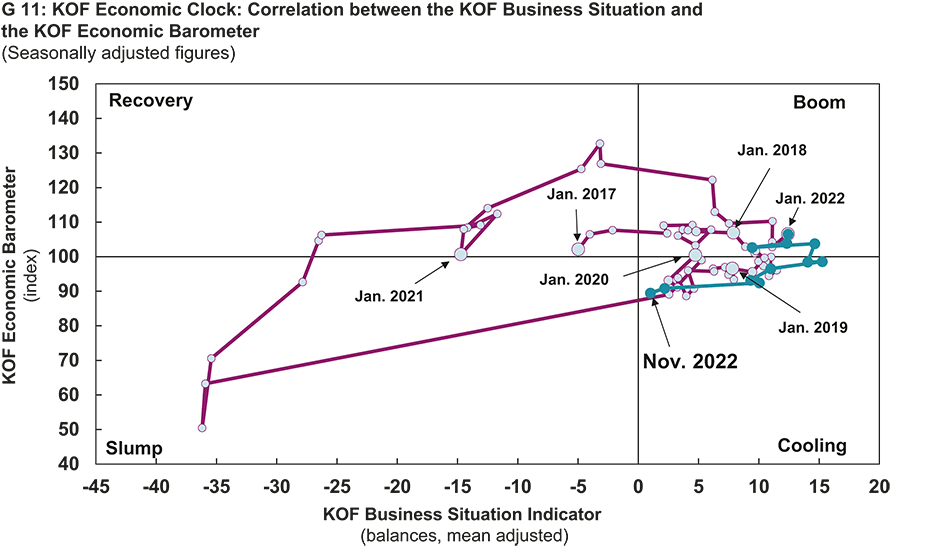
Business situation slightly less encouraging than in previous month
The KOF Business Situation Indicator fell in November for the second month in a row (see Chart G 9). Although its decline is slowing, it affected all of the sectors surveyed in November. The Swiss economy is slowing down slightly.
Business activity in the manufacturing sector slowed significantly for the fifth month in a row. Consumer goods manufacturers are performing particularly poorly this autumn. Overall, the volume of orders on hand in manufacturing is declining and finished goods inventories are being replenished. Earnings in the retail sector are under pressure and the business situation is reckoned to be less favourable than it was before. The retail sector is entering the busy Christmas period with well-stocked inventories. However, survey respondents are finding it difficult to forecast how business will perform over the coming months. Although the business situation in the project engineering sector is becoming gloomier, demand remains stable. Business in the financial and insurance services sector is also slightly less encouraging than it was in the previous month. Business activity in construction is more or less stable.
The Business Situation Indicator performed poorly in almost all regions defined by the Swiss Federal Statistical Office (FSO). It fell sharply in the Zurich region, Eastern Switzerland, Northwestern Switzerland and Central Switzerland. It changed very little in Espace Mittelland, the Lake Geneva region and Ticino.
The KOF Business Situation Indicator highlights companies’ current business situation. The KOF Economic Barometer, on the other hand, is an indicator of the economic outlook. The Business Cycle Clock shows that the economy was abruptly slowed by the pandemic in April 2020. After a rather disappointing start to 2021 the Swiss economy subsequently recovered. Although 2022 saw a continuation of the recovery in the first few months of the year, the economy has slowed noticeably since the summer.
Explanations
Chart G9 shows the KOF Business Situation Indicator across all sectors included in the survey. The business situation of sectors that are only surveyed quarterly is kept constant in the interim months.
Chart G10 shows the business situation in the main regions defined by the Swiss Federal Statistical Office. The regions are coloured differently to reflect their business situation. The arrows within the regions indicate the change in the situation compared with the previous month. An upward-pointing arrow indicates that the situation has improved compared with the previous month.
The Business Situation Indicator in the KOF Business Cycle Clock (Chart G11) is plotted against the KOF Economic Barometer. The indicator reflects the current business situation, while the barometer is a leading indicator of changes in activity. The clock can be divided into quadrants. During the recovery phase the business situation is below average but growth prospects are above average. At the peak of the economic cycle the situation and prospects are both above average. During the slowdown phase the situation is above average and the prospects are below average. At the bottom of the economic cycle the situation and outlook are both below average. Ideally the chart runs through the quadrants in a clockwise direction.
The KOF Business Situation Indicator is based on more than 4,500 reports from firms in Switzerland. Companies in industry, the retail sector, construction, project engineering and financial services and insurance are surveyed monthly. Businesses in the hospitality, wholesale and other services sectors are surveyed during the first month of each quarter. These firms are asked, among other things, to assess their current business situation. They can rate their situation as either ‘good’, ‘satisfactory’ or ‘poor’. The net balance of their current business situation is the difference between the percentages of ‘good’ and ‘poor’ responses.
Contact
KOF Konjunkturforschungsstelle
Leonhardstrasse 21
8092
Zürich
Switzerland
More information on the KOF business surveys can be found on our website.



